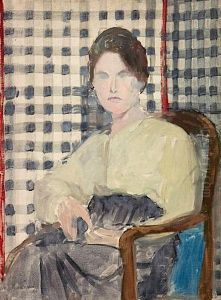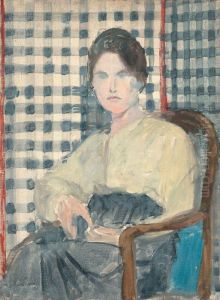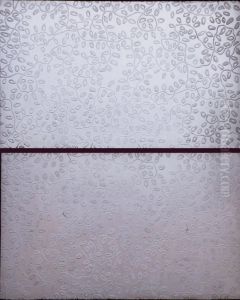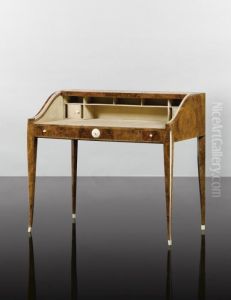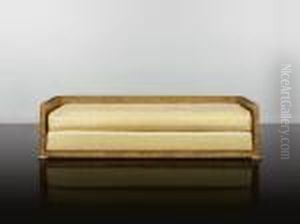Jacques-Emile Ruhlmann Paintings
Jacques-Emile Ruhlmann was a renowned French designer, celebrated for his high-end furniture and interior designs that became emblematic of the Art Deco movement. Born on August 28, 1879, in Paris, France, Ruhlmann was the son of a house-painting contractor. His father's trade provided him with an early exposure to the aesthetics of interior design and the practical aspects of working with materials and clients, which would later inform his career.
Ruhlmann was not formally trained as a furniture designer but instead took over his father's business in 1907, at which point he began to shift the focus toward the design and production of furniture. By 1913, he had established himself as a furniture designer of high repute. His work was characterized by an elegant and refined aesthetic, with a keen attention to materials and craftsmanship. Ruhlmann's designs made use of luxurious materials such as exotic woods, ivory, and lacquer, and he was known for his meticulous attention to detail and proportion.
The outbreak of World War I temporarily hindered Ruhlmann's work, but he quickly resumed his practice after the war. The 1920s marked the height of his career, with his participation in the 1925 Exposition Internationale des Arts Décoratifs et Industriels Modernes in Paris— the landmark exhibition that gave the Art Deco movement its name. Ruhlmann's pavilion 'Hotel d'un Collectionneur' was a triumph, showcasing his furniture and decorative objects in a luxurious domestic setting. This success solidified his reputation as one of the leading designers of the Art Deco style.
Ruhlmann's approach to design was somewhat traditional, as he favored handcrafted techniques over industrial methods. He maintained a workshop with skilled artisans and was involved in every aspect of the design and production process. His clientele included some of the wealthiest individuals of his time, and he was adept at creating bespoke interiors that met their sophisticated tastes and needs.
Despite his commercial success, Ruhlmann was not immune to criticism. Some contemporaries viewed his work as too opulent and disconnected from the social and economic realities of the era. Nevertheless, Ruhlmann's legacy has endured, with his pieces continuing to be highly sought after by collectors.
Jacques-Emile Ruhlmann's health began to deteriorate in the early 1930s, and he passed away on November 15, 1933. His death marked the end of an era, but his influence on furniture design and the Art Deco movement remains significant. Ruhlmann's work continues to be celebrated for its elegance, quality, and the way it exemplifies the style and sophistication of the period between the two World Wars.
